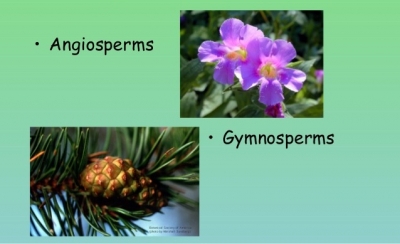
The key difference between angiosperms and gymnosperms is how their seeds are developed. The seeds of angiosperms develop in the ovaries of flowers and are surrounded by a protective fruit.
Gymnosperm seeds are usually formed in unisexual cones, known as strobili, and the plants lack fruits and flowers. Both groups use pollen to facilitate fertilization, though angiosperms have an incredible diversity of pollination strategies that are not found among the gymnosperms. Gymnosperms are known as non-flowering plants which are divided into six phyla: Gnetophyta Cycadophyta, Coniferophyta, Ginkgophyta, and Cordaitales (extinct). More than 1000 species under 88 genera of living gymnosperms are found and distributed throughout the world. Some notable species are pines, cypresses, cycads, gnetophytes such as Ephedra, Gnetum, Welwitschia, and Ginkgo biloba.
Many ecological niches are filled only by angiosperms. For example, carnivorous plants, submerged aquatic plants, and parasitic plants (with one possible exception) are all flowering plants. Additionally, the vast majority of plants consumed by humans for food are angiosperms, though the seeds of some gymnosperms, such as ginkgo and pine nuts, are of local importance in some places.
Picture Credit : Google




